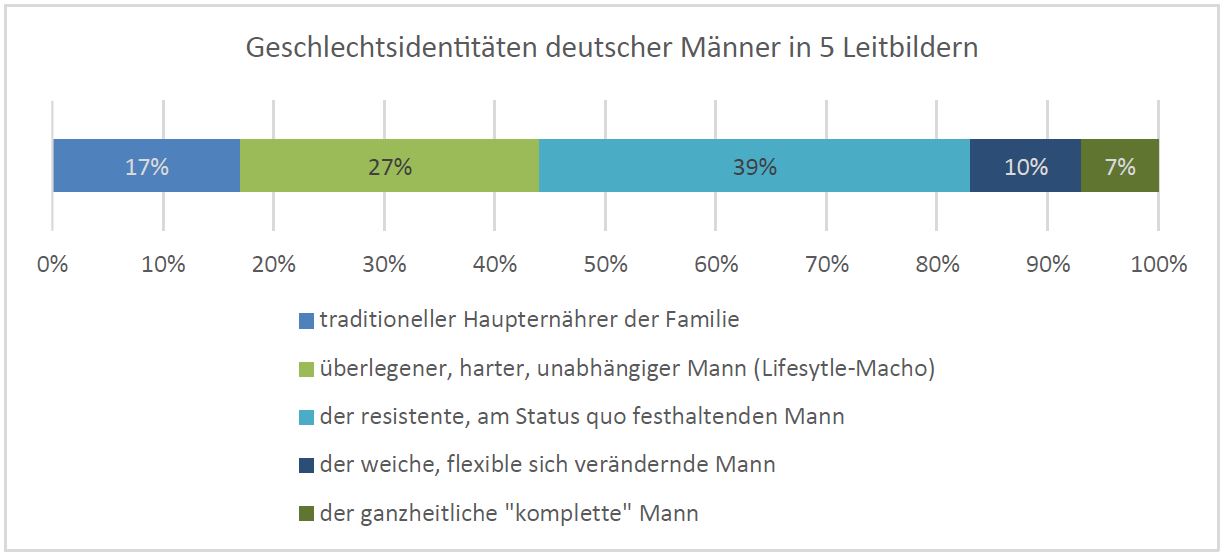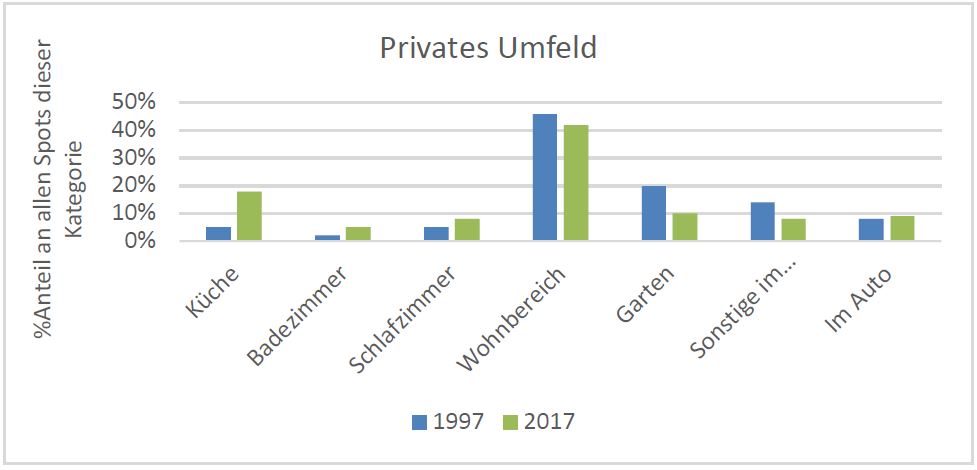Men in advertising: "And how much horsepower does the kitchen have?"
Back then, the advertising man told the advertising woman how to clean his shoes. Today, he awaits her at home with ice cream. At least in isolated cases, advertising is flirting with a new image of men, according to a recent study by the Media University.

Professor Andreas Baetzgen and project collaborator Lena Euchenhofer have investigated how men are portrayed in advertising. To do this, the team compared 560 TV commercials from 1997 and 2017 based on certain criteria. The results can be summarized in five points:
1. domestic, caring and empathetic
A new type stands out from the mass of inconspicuous advertising men. One who rattles off kitchen features like car features. One who falls asleep with a baby on his stomach. He takes his wife's advice and breaks with many things that have long been considered typically male.
"This new manhood is currently still overemphasized and particularly showcased," says Andreas Baetzgen, co-author of the study and professor at Stuttgart Media University. When the advertising man appears in the role of the househusband, this is by no means a matter of course yet, but rather the remarkable, disruptive element of these commercials, he says. "The dubious humor of these spots consists precisely in breaking with the male stereotype." The trend is new, he says, and was unheard of in the '90s to this degree and frequency.

Similarly, a social study shows that a new male role model is gaining a foothold in society. This refers to men who break with male stereotypes such as dominance, strength and toughness and appear softer and more likeable. Advertising is flirting with this new male image," says Baetzgen, referring to it as a "showy snub of conventions. However, these are still isolated cases.
2. in the masses man recognizes himself
However, most advertising men appear conspicuously inconspicuous today, as they did then, the study notes. In figures: three-quarters of the men shown have an average or slim figure, and a good half have short haircuts. Only 4 percent have a tattoo. "We want as many viewers as possible to see themselves in the advertising men," Baetzgen explains. "Advertisers therefore often show the image of a person who has a consensus." The model itself takes a back seat in the action, he adds. "Ultimately, the person becomes a prop and a placeholder for masculinity." Accessories don't play a big role, according to Baetzgen, but serve as an emphasis on a certain lifestyle. "Advertising makes use of what is considered fashionable at the moment." Today, 22 percent of advertising men wear a hat, sunglasses, earring, bracelet or necklace. In 1997, it was 19 percent. A new addition in 2017 is the beard.
3. slim, casually dressed, middle-aged, in relationship.
Today's advertising men look more mature than those of yesteryear. While 33 percent of actors were between 16 and 30 years old in 1997, this age group has shrunk to 22 percentage points in 2017. Meanwhile, the number of protagonists aged 31 to 45 has increased by 13 percentage points to 48 percent. "The advertising man appears less youthful and more masculine," Baetzgen interprets.

The physique, on the other hand, has changed only slightly, he said. "The ad man has become a bit slimmer and a touch more muscular, but not significantly so." Today, as then, he appears natural or well-groomed. What is new about the outer appearance, however, is the way he dresses. Today, the advertising man wears casual leisurewear much more often than 20 years ago (1997: 23 %, 2017: 37 %) - to the detriment of smart gowns. While 23 percent wore suits or tuxedos in 1997, the number dropped to 15 percent in 2017. Fittingly, more spots today take place in private settings (1997: 26 %, 2017: 31 %). Of these, the kitchen as a plot location accounted for 5 percent in 1997 and 18 percent in 2017. In one Knorr spot, for example, the man takes on the role of cook for his partner. In another, he is waiting at home with Cremissimo ice cream when his sweetheart returns home from work.


The relationship structure proves to be almost identical in 1997 and 2017: As before, men in advertising are mostly in a fixed or loose relationship with a woman. Same-sex couples are virtually absent. 21 percent appear in the role of boyfriend, 16 percent in the role of partner and 12 percent in the role of father.
4. authority gives way to eye level
Distributing tasks and making smart remarks used to be a thing of the past. In 2017, men are less likely to act as authority figures. The majority meet their interaction partners at eye level (1997: 70 %, 2017: 78 %) instead of subordinating them (1997: 22 %, 2017: 18 %). According to the study authors, one indication of this assumption is relational body size, which can differ from a person's actual body size due to location or camera guidance. In 2017, 40 percent of men are the same height as their female interaction partners. That's 13 percentage points more than 20 years ago. The fact that advertising men wear suits less often also plays into this, Baetzgen says. This could also be related to the fact that in the reality of life, dress codes apply less frequently. "But the suit is also an expression of social status, success and dominance.
5. aesthetics instead of nudity
Sex sells: Today, as in the past, men are portrayed in a sexualized way in advertising. However, the style of play has changed. Whereas in the past the focus was on nudity as such, today we see mainly erotic allusions. A well-known commercial from 1996, for example, runs as follows: "It's half past one," female workers shout excitedly. "Time for Coca Cola light!" A crowd of them gathers in front of the office windows and gazes languidly down at a construction worker on break. He takes off his shirt and drinks from a can of Coke, bare-chested. The spot is accompanied by the song: "I just wanna make love to you". Baetzgen comments: "The man takes his clothes off and the woman shows that she finds this attractive. It's a twisted play on stereotypes. At the time, it was breaking taboos." Today, he says, no brand can attract attention with such a "clumsy use of sex appeal."
https://www.youtube.com/watch?v=i_OACwYHyMw
To be sure, 9 percent of advertisers still appear nude. "But advertising no longer works by showing sexual acts or nudity, but with subtle innuendos and stimuli." A recent example: an attractive (clothed) couple dances, moves together in harmony, embraces and drinks a glass of Amaretto. "Immerse yourself in the world of Disaronno." The idea of linking a drink with eroticism is the same. The implementation has changed.
Text: Ann-Kathrin Kübler

Annotation: The article is published in the Advertising Week Print issue 10/2018 published. How women are portrayed in advertising was reported by the Advertising Week also; to be read online at Werbewoche.ch/advertisingwoman.








